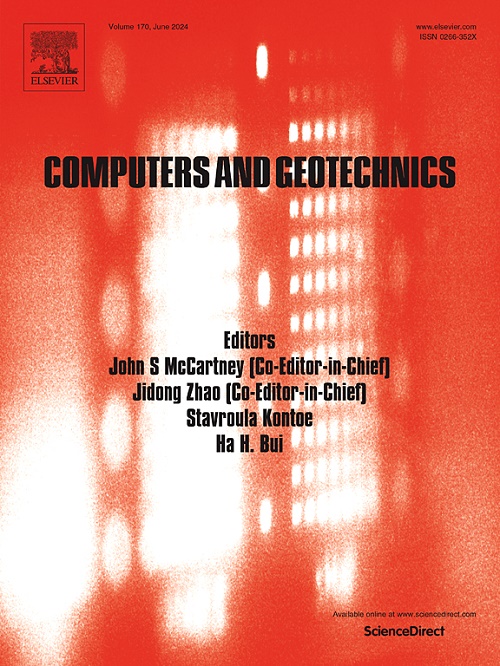Stability analysis of rock slopes considering strata uncertainty using dual-source surface wave inversion with borehole constraints
IF 5.3
1区 工程技术
Q1 COMPUTER SCIENCE, INTERDISCIPLINARY APPLICATIONS
引用次数: 0
Abstract
The stability of rock slopes is mainly controlled by subsurface characteristics, such as soft layers and broken zones. However, determining their locations and associated uncertainties is challenging due to their concealment and complexity. This study proposes a framework for stability analysis of rock slopes, which accounts for strata uncertainty quantified through dual-source surface wave inversion with borehole constraints. The shear wave velocity profiles of the slope were obtained by combining active surface wave and passive microtremor using multichannel analysis of surface waves (MASW) method and microtremor survey method (MSM), respectively. The prior constraints for the inversion were obtained from borehole television and ultrasonic testing. Subsequently, the inverted depths of the interfaces were represented as continuous distributions and fitted to various models. The stability of the slope was then analyzed by incorporating strata uncertainty. The proposed framework was applied to a steep road-cut rock slope located in Shandong Province, China. The results show that the proposed framework effectively detects soft layers and quantifies uncertainties in interface depths for probabilistic stability analysis. The dual-source surface wave inversion provides both sufficient detection depth and high resolution of shallow strata. Incorporating the prior borehole-derived constraints, the accuracy and speed of the dual-source surface wave inversion have been greatly enhanced. The interface depths can be quantitatively described by normal distributions, which have been selected based on the lowest Akaike Information Criterion (AIC) value. Three soft layers were identified in the presented case, and variations in the thickness of the soft layers influenced the safety factor.
求助全文
约1分钟内获得全文
求助全文
来源期刊

Computers and Geotechnics
地学-地球科学综合
CiteScore
9.10
自引率
15.10%
发文量
438
审稿时长
45 days
期刊介绍:
The use of computers is firmly established in geotechnical engineering and continues to grow rapidly in both engineering practice and academe. The development of advanced numerical techniques and constitutive modeling, in conjunction with rapid developments in computer hardware, enables problems to be tackled that were unthinkable even a few years ago. Computers and Geotechnics provides an up-to-date reference for engineers and researchers engaged in computer aided analysis and research in geotechnical engineering. The journal is intended for an expeditious dissemination of advanced computer applications across a broad range of geotechnical topics. Contributions on advances in numerical algorithms, computer implementation of new constitutive models and probabilistic methods are especially encouraged.
 求助内容:
求助内容: 应助结果提醒方式:
应助结果提醒方式:


